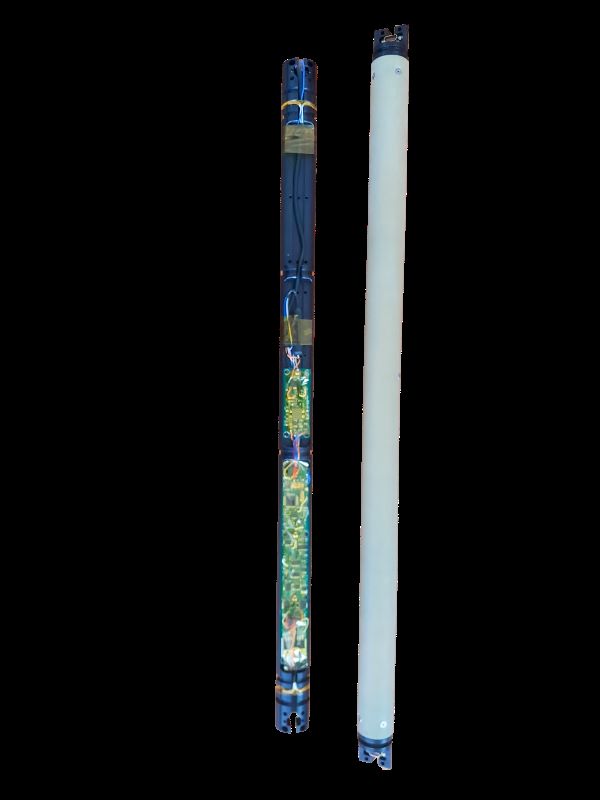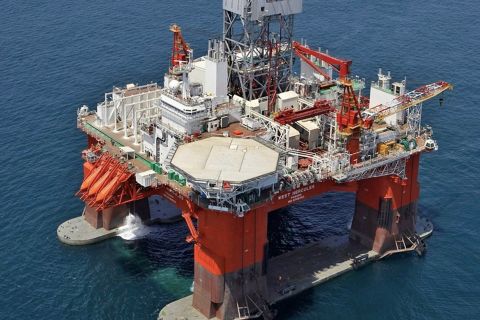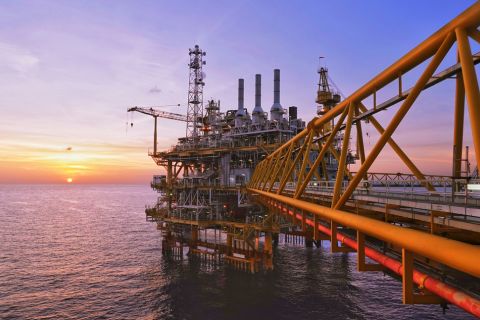Learn more about Hart Energy Conferences
Get our latest conference schedules, updates and insights straight to your inbox.
From a cybersecurity breach to rig contracts to a surprise spill response readiness test, below is a compilation of the latest headlines in the E&P space within the past week.
Activity headlines
Shell sanctions Rosmari-Marjoram project
Shell subsidiary Sarawak Shell Berhad (SSB) and partner Petronas Carigali Sdn Bhd will develop the Rosmari-Marjoram gas fields offshore Sarawak, Malaysia.
The deepwater sour gas fields, discovered in 2014, will use 240 solar panels to power the offshore platform.
The Rosmari-Marjoram development will supply gas to the PETRONAS LNG Complex. The project comprises a remotely operated offshore platform and onshore gas plant, with infrastructure that includes one of the longest sour wet gas offshore pipelines in the world stretching more than 200 km.
The Rosmari-Marjoram development will consist of a subsea tie-back, an unmanned well head platform, a 207-km pipeline to shore and an onshore gas plant at Bintulu.
The Rosmari-Marjoram project is designed to produce 800 MMscf/d with production expected to start in 2026.
SSB operates the fields with 80% on behalf of Petronas with the remaining 20%.
CNOOC gas fields go online
CNOOC Ltd. announced its Dongfang 1-1 gas field southeast zone and Ledong 22-1 gas field south block development projects in the western South China Sea have begun production ahead of schedule.
The development projects are in an average water depth of 90 m. Using existing processing facilities of Dongfang 1-1 platform and Ledong 22-1 platform, the projects include four development wells, two subsea production systems, two mixed transportation pipelines of oil and gas and two umbilicals. The projects are expected to reach peak production of approximately 44 MMcf/d.
CNOOC holds 100% interest in both projects.
Tyra process module on its way
While production from the Tyra field offshore Denmark has been delayed to the winter 2023/2024 season due to manufacturing and supply chain disruptions, the gas processing module has sailed away.
McDermott International said the Tyra East G gas processing module for the TotalEnergies-operated Tyra Redevelopment Project was on its way to the Danish North Sea.
The module weighs 18,700 tons (17,000 metric tons) and set sail on Sept. 1 from McDermott's facility in Batam, Indonesia.
McDermott said more than 18.8 million work hours went into engineering and constructing the process module.
The sailaway marked the end of onshore construction.
"All the remaining work on Tyra II will take place in the Danish North Sea. The sheer size and magnitude of the process module is just incredible, and it will be fabulous to unite this final major component with the remaining platforms at the Tyra field in the next month," said Eric Delattre, managing director for TotalEnergies Exploration & Production Denmark, in a press release.
Project partner Norwegian Energy Company (Noreco) said the heavy transport vessel GPO Emerald was sailing the unit from Indonesia to the Tyra field in the Danish North Sea, a voyage of 8,700 miles taking approximately one month. At the Tyra field, the world's largest crane vessel, Sleipnir, will lift and install the process module.
The Tyra Redevelopment project represents the largest oil and gas investment in the Danish North Sea. Once the redeveloped Tyra II is back on stream, it is expected to deliver 2.8 Bcm/year of gas, which amounts to 80% of the forecasted Danish gas production. Noreco said peak production is expected at 300 MMcf/d from Tyra and five unmanned satellite fields.
TotalEnergies operates the project on behalf of partners Noreco and Nordsøfonden.
Contracts and company news
Cybersecurity breach at Sembcorp
Sembcorp Marine Ltd. reported a cybersecurity incident in which an unauthorized party accessed part of its IT network via third-party software products.
The company appointed cybersecurity experts to conduct detailed analytics to flush out all breaches and related root causes, assist with impact assessment, review and enhance security measures to further strengthen the company’s core IT infrastructure and systems.
Based on investigations and impact assessment to-date by the company and the cybersecurity experts, the incident and related risks have been effectively addressed. Sembcorp said the company’s business operations remain unaffected.
Helix swoops into Thunder Hawk
Helix Energy Solutions subsidiary Deepwater Abandonment Alternatives (DAA) has acquired 62.5% interest in Mississippi Canyon block 734 in the deepwater Gulf of Mexico.
The block includes three wells and subsea infrastructure and is known as the Thunder Hawk field. Under the deal with MP Gulf of Mexico LLC, a joint venture controlled by Murphy Exploration & Production Company – USA, DAA receives all of MP’s interest in the block in exchange for assuming MP’s abandonment obligations at the field, effective Nov. 1.
In addition to anticipated future production revenue, DAA will operate the Thunder Hawk Field with Helix eventually expected to perform the required plug and abandonment operations.
ABS, NOV qualifying subsea ammonia storage system
ABS announced it is providing new technology qualification services for subsea storage technology from NOV.
The subsea technology brings a new and unique solution for the safe storage of larger volumes of fluids such as EOR chemicals, production chemicals, oil, condensate and maritime fuels. The subsea storage system is being designed to be placed at any water depth and adjusted in capacity depending on customer requirements.
The joint development project includes NOV, ABS, Equinor, Shell, The Research Council of Norway and The Net Zero Technology Centre.
Oceaneering, IQ collaborate on inspections
Oceaneering International announced it will collaborate with InnetiQs GmbH (IQ) to explore and develop advanced inspection solutions for the offshore and onshore energy markets.
This collaborative agreement combines IQ’s inspection technologies for subsea pipelines, risers and structural assets with Oceaneering’s global operations and ability to provide cost-effective, in-depth inspection and cleaning methods that lessen exposure risks to personnel. The agreement ties into Oceaneering’s current integrity management systems and Inform software suite of predictive analytic solutions.
Work is underway to help evolve the development of IQ’s Splash Zone Scanner which combines multiple inspection methods and cleaning capability into a single scanning system to deliver a combined result.
BSEE tests ExxonMobil’s Harmony response
The U.S. Bureau of Safety and Environmental Enforcement conducted a government-initiated unannounced exercise in late August that included an oil spill response equipment deployment at the ExxonMobil Las Flores Canyon Facility in Goleta, Calif.
The one-day exercise required ExxonMobil to respond to a simulated oil spill from a subsea pipeline connected to the company’s Platform Harmony located about six miles offshore and included oil spill response professionals from U.S. Coast Guard, Department of Transportation, California Coastal Commission and the Office of Spill Prevention and Response.
BSEE and its interagency partners focused on several objectives during the GIUE. These include assessing the operator’s ability to make timely notifications to emergency officials, mobilize and organize staff to respond to the spill, plan for and implement shoreline protection and oil recovery strategies, and establish effective communications within a Unified Command.
“Government initiated unannounced exercises are designed to give BSEE the opportunity to evaluate, on a no-notice basis, the response preparedness posture of the offshore exploration and production community,” said Robert Zaragoza, BSEE Oil Spill Preparedness Division exercise designer and controller. “These exercises provide an opportunity to ensure everyone is prepared in an event requiring emergency response.”
Eni picks Danos for brownfield work
Danos announced Eni had awarded it a three-year contract to support brownfield repairs and routine maintenance to its Gulf of Mexico platforms. The contract will use Danos’ fabrication, construction and scaffolding service lines.
In June, Danos began in-house fabrication for skids and subsea skids to be sent to Eni’s Alleghany platform, located in the Gulf 260 km south of New Orleans.
Valeris fleet gets work
Valaris announced a host of new contracts and extensions.
Eni Mexico signed on for the Valaris DPS-5 semi for 240 days offshore Mexico, starting in the fourth quarter 2022. The operating day rate is $313,500, plus a mobilization fee of $1.2 million.
Shell has extended a contact for the heavy duty harsh environment jackup VALARIS 122. The four-well contract extension has a duration around 500 days in the U.K. North Sea. The contract extension will be in direct continuation of the existing firm program and has a contract value of over $60 million.
An undisclosed operator signed a one-well contract for heavy duty modern jackup VALARIS 107 to work offshore Australia, starting either late in the first quarter or early in the second quarter of 2023 with an estimated duration of 60 days. The operating rate is $120,000/d.
DNO exercised a one-well option for heavy duty ultra-harsh environment jackup VALARIS 247 for operations in the U.K. North Sea. The one-well option has an estimated duration of 45 days and will be in direct continuation of the existing firm program.
Diamond rigs win commitments
Diamond Offshore Drilling Inc. announced Inpex Operations Australia Pty Ltd. will use the Ocean Apex for work on the Northwest Shelf of Australia. The two-well contract is expected to begin in the fourth quarter of 2023, directly following the rig’s prior contract. Combined with previous recently announced contracts, the Ocean Apex is fully contracted in Australia until late 2024.
Diamond Offshore also announced the Diamond-managed drillship Vela will work for BOE Exploration & Production LLC in the U.S. Gulf of Mexico. The Vela was awarded a contract with a minimum duration of 225 days for a total value of approximately $88 million and includes options for up to an additional five to seven wells. Work under the new contract is expected to begin in first quarter of 2023.
Seadrill selling 7 jackups in Saudi Arabia
Seadrill Ltd. announced it will sell seven jackups in Saudi Arabia under an agreement with subsidiaries of ADES Arabia Holding Ltd. for $628 million cash.
Following the sale, ADES will own the AOD I, AOD II, AOD III, West Callisto, West Ariel, West Cressida and West Leda. ADES will also employ the crews operating the rigs and will hold the drilling contracts related to the rigs.
The sale is subject to customary closing conditions, including approval of competition authorities in Saudi Arabia and is anticipated to close within the fourth quarter of 2022.
XXT-Hop for real-time MWD communication

Enteq Technologies launched its XXT-Hop series system, which will allow drilling contractors to access real time data during live rotary steerable system (RSS) and measurement-while-drilling (MWD) operations.
The communications device can be used in conjunction with Enteq’s SABER RSS tool or existing RSS and MWD systems. It uses drop-in modules, consisting of a transmitter fitted above the RSS, which connects with a receiver in the MWD string to send real-time drilling data to the surface.
The XXT-Hop series removes the need for physical connectors, dedicated collar lengths and enables logging while drilling to be run below MWD equipment rather than above, taking it much closer to the bit. Through accessing real-time data during downhole activity, contractors can make better and more efficient decisions, enhancing operational efficiency and reducing risk, Enteq said.
The XXT-Hop series has been developed to meet market demand with an initial range of 5 m (16 ft) for standard equipment set up, and Enteq is currently developing a version suitable for ranges up to 25 m (80 ft).
Emerald electric frac heading to Marcellus, Utica
Seneca Resources Company will deploy NexTier Oilfield Solutions Inc.’s first electric Emerald fracturing system next year.
The fully integrated electric fracturing fleet will begin operations under a multi-year agreement with Seneca, the exploration and production segment of National Fuel Gas Co., for work in the Marcellus and Utica shale plays of the Appalachian Basin.
The Emerald fracturing system will receive on-site power generation from VoltaGrid LLC's power generation system featuring dynamic response reciprocating natural gas generators. The generators powering NexTier's electric Emerald fracturing system will be fueled by natural gas produced in the field by Seneca. Each Emerald pumping unit incorporates two fully independent 3,000-HHP electric pumps on a single trailer, which produces abundant pumping power with a smaller equipment footprint than conventional diesel powered fracturing fleets.
Polaris to use STRYDE Nodes in Africa
U.K.-based seismic technology provider STRYDE has signed a contract with Polaris Natural Resources for a node system to provide high-density surface data in Africa.
Under the seven-figure contract, Polaris is purchasing a 13,000-node system from STRYDE to acquire high-density subsurface data for oil and gas exploration in Africa.
The deal follows successful use of the STRYDE nodal system in Namibia and Zimbabwe.
High-density 2D seismic data was harvested from STRYDE Nodes in Zimbabwe earlier this year before being sent for processing and interpretation, enabling an independent oil and gas operator to identify and mature additional prospects in the Cabora Bassa Basin. Drilling of the Muzarabani-1 onshore well is underway.
Due to the miniature size and agility of the STRYDE Nodes, Polaris was able to deploy and retrieve thousands of nodes per day, minimizing the need for line clearing and land disruption, resulting in being able to shoot the survey in the most efficient way possible, according to STRYDE.
Recommended Reading
Second Light Oil Discovery in Mopane-1X Well
2024-01-26 - Galp Energia's Avo-2 target in the Mopane-1X well offshore Namibia delivers second significant column of light oil.
CNOOC Sets Increased 2024-2026 Production Targets
2024-01-25 - CNOOC Ltd. plans on $17.5B capex in 2024, with 63% of that dedicated to project development.
Seadrill Awarded $97.5 Million in Drillship Contracts
2024-01-30 - Seadrill will also resume management services for its West Auriga drillship earlier than anticipated.
Oceaneering Won $200MM in Manufactured Products Contracts in Q4 2023
2024-02-05 - The revenues from Oceaneering International’s manufactured products contracts range in value from less than $10 million to greater than $100 million.
CNOOC’s Suizhong 36-1/Luda 5-2 Starts Production Offshore China
2024-02-05 - CNOOC plans 118 development wells in the shallow water project in the Bohai Sea — the largest secondary development and adjustment project offshore China.






